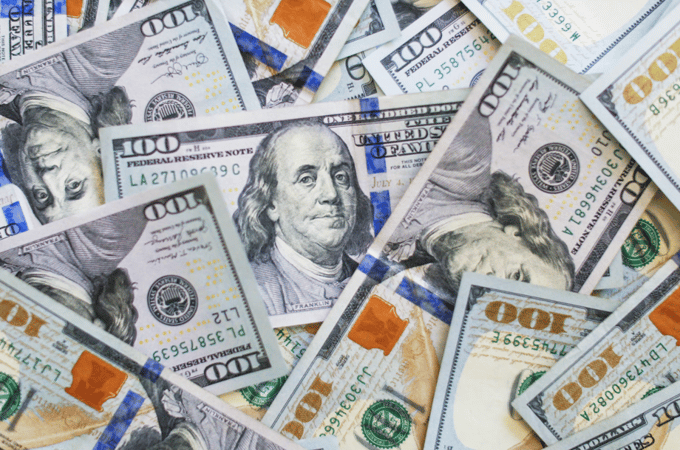
The U.S. dollar has been the world’s reserve currency for decades. The United States has the leading economy, and political stability has caused governments, central banks, monetary authorities, and supranational institutions to hold dollars in reserves to facilitate cross-border payments.
The dollar index reflects the U.S. dollar’s value against other reserve currencies, including the euro, Japanese yen, British pound, Canadian dollar, Swedish krona, and Swiss franc. The index has a 57.6% exposure to the second-leading reserve foreign exchange instrument, the euro. The dollar index futures trade on the Intercontinental Exchange. After falling to an 89.165 low in January 2021, the dollar index exploded 28.7% higher, reaching 114.745 in September 2022. The index reached a two-decade high at just below the 115 level.
The significant rally in the dollar index occurred as inflationary pressures caused the U.S. central bank to raise interest rates. Since interest rate differentials are a substantial driver of the value of one currency versus another, the dollar index exploded higher as the yield increased faster than other index components. Moreover, Russia’s invasion of Ukraine caused the first major European war since WW II, weighing on the euro currency, which accounts for the lion’s share of the dollar index. The dollar index experienced a nearly perfect bullish storm over the twenty-one months from early 2021 through September 2022. Meanwhile, the dollar index ran out of bullish steam at the highest level since 2022 and has turned lower over the past months.
A decline- Technical resistance became technical support
- The dollar index broke out above the 103.96 March 2020 high and technical resistance level in May 2022.
- Technical resistance became technical support.
- The index fell below the 103.960 support level in December 2022, validating the bearish trend in the dollar index.
- The index was at the 101.721 level on Friday, January 27.
Yield differentials supported the dollar index- National debt levels are weighing on the U.S. currency
- The U.S. Federal Reserve increased the short-term Fed Funds Rate from a midpoint of 0.125% in March 2022 to 4.375% in December 2022.
- Quantitative tightening, reducing the Fed’s swollen balance sheet, pushed interest rates higher further out along the yield curve.
- Higher rates pushed the dollar index higher as U.S. dollar rates rose more rapidly than other index component currencies.
- The U.S. national debt rose to the $31.4 trillion level. Higher interest rates make financing the debt more expensive, pushing it higher and threatening a debt crisis if the U.S. does not increase the debt ceiling. The high debt and default threat could weigh on the dollar index in early 2023.
Geopolitical bifurcation threatens the dollar’s global role
- China and Russia’s “no-limits” alliance has bifurcated the world’s nuclear powers.
- Markets reflect the geopolitical and economic landscapes.
- Deteriorating relations between the world’s leading economies and military powers impede trade flows and distort the global financial system.
- China and Russia are using other currencies and assets for cross-border payments, reducing the U.S. dollar’s role in worldwide finance.
The markets that benefit from a falling U.S. dollar
- Commodity prices tend to rally when the U.S. dollar declines as raw material prices fall in other currency terms.
- Earnings of U.S. multinational companies tend to rise when the dollar weakens as U.S. companies’ pricing becomes more competitive versus foreign companies.
- Cryptocurrencies could see increased prices as the dollar falls because Bitcoin, Ethereum, and other cryptos offer an alternative to traditional currencies.
- S. bonds could rise with a weaker dollar as they attract foreign buying.
Why the current dollar decline poses a threat to markets across all asset classes
- A U.S. debt crisis caused by the $31.4 trillion deficit could cause a sovereign credit downgrade.
- A stalemate in Congress to increase the debt ceiling could lead to a U.S. debt default.
- Shifts in the geopolitical landscape causing China, the world’s second-leading economy, to turn to non-dollar assets for payments threatens the U.S. dollar’s leadership role.
- The U.S. administration follows a firm dollar policy. A falling U.S. currency against other world foreign exchange instruments signifies economic and political weakness.
Thanks for reading, and stay tuned for the next edition of the Tradier Rundown!